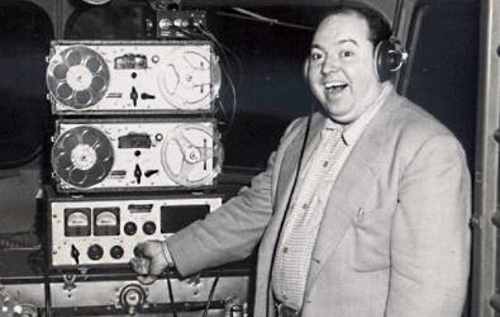.
Once upon a time there was no recorded music, and you could only listen to live music. Brilliant musical performances occurred and vanished into the air except for whatever musical memories or emotions were remembered by the listeners.
Early recordings were made with a single microphone cutting direct to vinyl. Then came tape, then stereo tape and so on to 8, 16 and even 24 tracks. As track numbers increased, engineers were able to separate more instruments for finer sound control.
Of all the developments in audio technology, I believe the most profound was the sync head. Sure, the stacking of tracks was important and lead to mixing, but the sync head changed the most about how music was made.
Prior to the advent of the sync head (a record head on a tape recorder that also has playback capabilities), the only way to build upon previously recorded material was to play the material on one tape deck and record a combination of it and new sounds to a second tape deck.
For the most part, recording was a matter of capturing a complete performance. Then along came the sync head and the overdub became possible. Musicians could listen to previously recorded tracks while recording new ones, and the new tracks would be perfectly in sync.
In fact, if you put the machine into record somewhere in the middle of the song and then took it out of record shortly after, you could replace sections of performances.
This led to many changes…
1. Musicians Stopped Playing Together.
Now that parts could be added at any time, it was no longer necessary to have an entire band playing a full song along with a singer for every take of the song. The band could perform the song one time and the singer could perform over and over until the take was perfect, each time recording a new track over that one performance by the band.
Granted, that meant that the band could not change how they were playing in response to something the singer was doing since the band was already recorded, but overall it was a major improvement in music production. All you needed to do was get one good take from the band, then you could send them home and not worry about paying them while the singer was getting it right.
Unfortunately as the number of instruments playing together reduced to the point of recording each instrument individually starting with drums, then on another day bass, then piano (etc), the musical communication and variation that would normally occur as musicians responded to each other’s live playing became less a part of the music.
Yes, you could now examine every part under a microscope and make sure each performance was perfect and exactly what was intended…but you no longer have the communal musical interpretation of a particular song. Each part would only be able to interact with what was already recorded, often leaving the drummer nothing to interact with but a click track.
2. Musicians Had Less Pressure To Perform With Consistent Quality.
Since you could always go back and re-sing a vocal, there was less pressure to get it right as there was when an expensive band was backing you for every take.
Eventually as it became possible to go in and out of record for very tight periods it became possible to replace individual words or even syllables. Vocal performances became collages from many performances rather than a single vocal interpretation.
3. Producers And Artists Could Get The Performance They Wanted Instead Of Compromising.
Although it was always possible for a producer to elicit a performance out of a singer in the same way a director elicits a particular performance out of an actor, now it was possible to save different versions to move and combine as desired for a final, perfect vocal.
4. Volume Dynamics Became Less A Function Of Performance And More A Function Of Mixing.
Since the musicians were no longer performing together, they were no longer changing their dynamics according to what each other were playing.
The dynamic interaction that is an important part of communal music had to be created afterwards by the mixing engineer.
5. Individual Musicians Could Play More Of The Parts.
This meant artists with a strict understanding of how they wanted their music performed and the ability to play the necessary instruments (such as Stevie Wonder) could really do it all themselves.
I know that some of these points are direct contradictions. But the sync head and the overdub changed recording forever.
For more, look up these names: Tom Edison, Emile Berliner, Les Paul, and Tom Dowd.





















